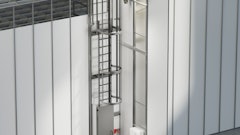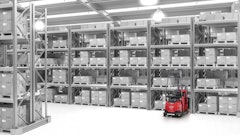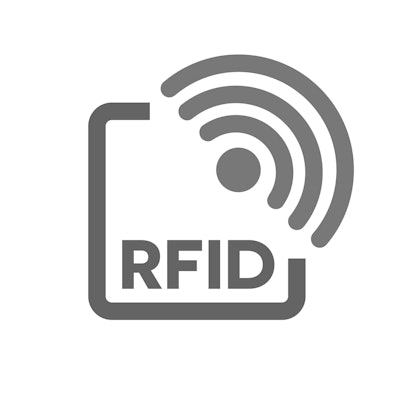
Radio Frequency Identification (RFID) technology is transforming supply chain and logistics operations by providing unprecedented visibility, efficiency, and control. Unlike traditional barcode systems, RFID uses electromagnetic fields to automatically identify and track tagged items, without requiring direct line-of-sight scanning. This capability gives logistics managers multiple ways to track and manage products and assets across the entire supply chain, from manufacturing to last-mile delivery.
RFID tags and scanners enhance product and materials handling both inside and outside the warehouse, with applications ranging from real-time inventory management to automated logistics processes. By reducing manual errors, speeding up operations, and improving data accuracy, RFID is helping businesses optimize their supply chains like never before.
What is RFID?
RFID is a wireless technology that uses electromagnetic fields to automatically identify and track tags attached to objects. Unlike barcodes, RFID does not require line-of-sight scanning and can read multiple tags simultaneously, making it faster and more efficient for inventory and asset tracking.
An RFID system consists of:
- Tags – Small electronic devices with a microchip and antenna that store data.
- Readers – Devices that emit radio waves to communicate with tags.
- Software – Systems that process and analyze the collected data.
A 2023 report by Grand View Research projects the global RFID market to grow at 15.8% CAGR from 2025 to 2030, driven by retail and logistics demand.
How RFID enhances supply chain visibility
One of RFID’s biggest advantages is real-time tracking of goods throughout the supply chain. According to a study published in Scientific Reports (2022), RFID improves inventory accuracy by reducing human errors and automating data capture.
Automated inventory management: RFID scans hundreds of items in seconds, eliminating manual stock checks.
Reduced stockouts and overstocking: Real-time data helps optimize inventory levels and prevent disruptions.
7 key benefits of RFID in supply chains
1. Seamless integration with warehouse management systems
RFID enhances warehouse management systems (WMS) by automating inventory tracking. Unlike manual scanning, RFID allows instant updates on stock levels, locations, and movements—eliminating human errors. When goods arrive, RFID scanners quickly register them into the system, and as items move through storage and warehouse, their real-time status is automatically recorded. This integration ensures faster processing, fewer discrepancies, and better decision-making.
2. Optimized warehouse operations and asset tracking
RFID isn’t just for products—it also tracks forklifts, pallets, and transport vehicles, improving asset utilization. Workers can locate equipment instantly, reducing downtime and speeding up material handling. Additionally, RFID helps in route optimization within warehouses, ensuring the shortest paths for picking and packing, which cuts operational time significantly.
3. Lightning-fast and accurate inventory audits
Traditional stock-taking is slow and error-prone. RFID enables near-instantaneous inventory counts—some scanners can read hundreds of tags in seconds without direct line-of-sight. This allows for frequent, real-time stock checks, minimizing discrepancies and preventing stockouts or overstocking.
4. Error detection and process improvement
Mislabeled or misplaced items can disrupt supply chains. RFID helps trace product movements, identifying where errors occur, whether in receiving, storage, or shipping. By analyzing these patterns, businesses can refine workflows and prevent recurring mistakes, leading to smoother operations.
5. Enhanced product availability and demand fulfillment
Modern consumers expect products to always be in stock. RFID provides end-to-end visibility, allowing suppliers and retailers to match inventory with demand forecasts accurately. By knowing exactly where products are at any given time, businesses can prevent shortages, reduce excess stock, and improve customer satisfaction.
6. Streamlined manufacturing and reduced waste
In manufacturing, RFID tracks raw materials and components, preventing loss and optimizing production flow. Machines equipped with RFID can identify and assemble parts efficiently, reducing delays and improving quality control. This leads to lower production costs and faster time-to-market.
7. Theft prevention and loss reduction
RFID acts as a digital watchdog—if an item moves outside authorized zones, the system flags it. This deters theft and helps identify loss patterns, allowing businesses to strengthen security measures and reduce shrinkage.
The future of RFID in supply chains
As technology advances, RFID is becoming more affordable and versatile. Key future trends include:
1. IoT integration
- Sensors in RFID tags will track location plus temperature, shock, and product condition in real time
- Prevents spoilage, reduces waste, and ensures compliance
2. Blockchain security
- Creates tamper-proof records of a product's journey
- Combats counterfeiting and verifies ethical sourcing
3. Next-gen tags
- Thinner, cheaper, and even battery-free versions
- Makes RFID viable for more industries
4. AI-powered insights
- Predicts inventory needs and detects anomalies automatically
- Shifts supply chains from reactive to proactive
5. Fully automated logistics
- Robots and autonomous vehicles will use RFID for hands-free tracking
- Enables self-routing shipments and smart warehouses
Conclusion
RFID is no longer optional for competitive supply chains. With proven ROI in accuracy, speed, and theft prevention, businesses investing in RFID today will lead tomorrow’s logistics landscape.












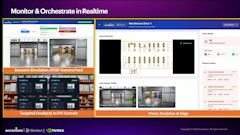

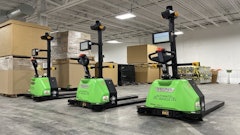


![Pros To Know 2026 [color]](https://img.sdcexec.com/mindful/acbm/workspaces/default/uploads/2025/08/prostoknow-2026-color.mduFvhpgMk.png?ar=16%3A9&auto=format%2Ccompress&bg=fff&fill-color=fff&fit=fill&h=135&q=70&w=240)
